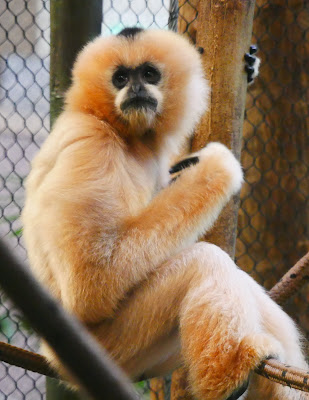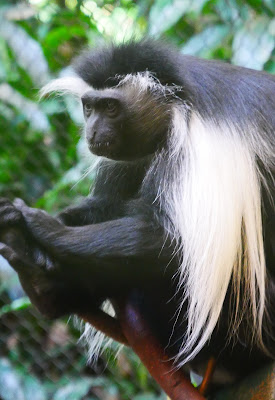I ironically, on my first visit, while I was less than impressed by the monkeys' habitats, I did have a wonderful experience with the Gorilla troop in their outside space. This trip, the space was clearly set up with snacks for their arrival, they were not yet out, and I ended up not seeing them.
The way the building is shrouded in vegetation, it conceals the actual size of the structure creating a slight sense of magic when you enter and see the space inside.
The space held habitats for four species of monkey, both Old World and New.
WHITE-FACED SAKI
Pithecia pithecia
This is the male. Females don't have the cream colored face. Theirs is mottled brown and gray. Native to Bolivia, I love these beautiful monkeys.
WHITE-HANDED GIBBON
Hylobates lar
Another beautiful primate, White-handed Gibbons call Thailand, western Malaysia, northern Sumatra in Indonesia, as well as, adjoining regions of Laos, Myanmar, and China.
ANGOLAN BLACK-AND-WHITE COLOBUS
Colobus angolensis
There are a handful of sub-species of Colobus monkeys. All are native to Africa. A couple are resident in AZA zoos. Most common are the Mantled Black-and-White Colobus, Colobus guereza. The Pittsburgh Zoo is home to Angolian Black-and-White Colobus, which makes the opportunity to experience them somewhat more special.
BLUE MONKEY
Cercopithecus mitis
There are nine sub-species of Blue Monkeys. They are native to sub-Saharan central Africa, most notably Kenya and Tanzania.















No comments:
Post a Comment